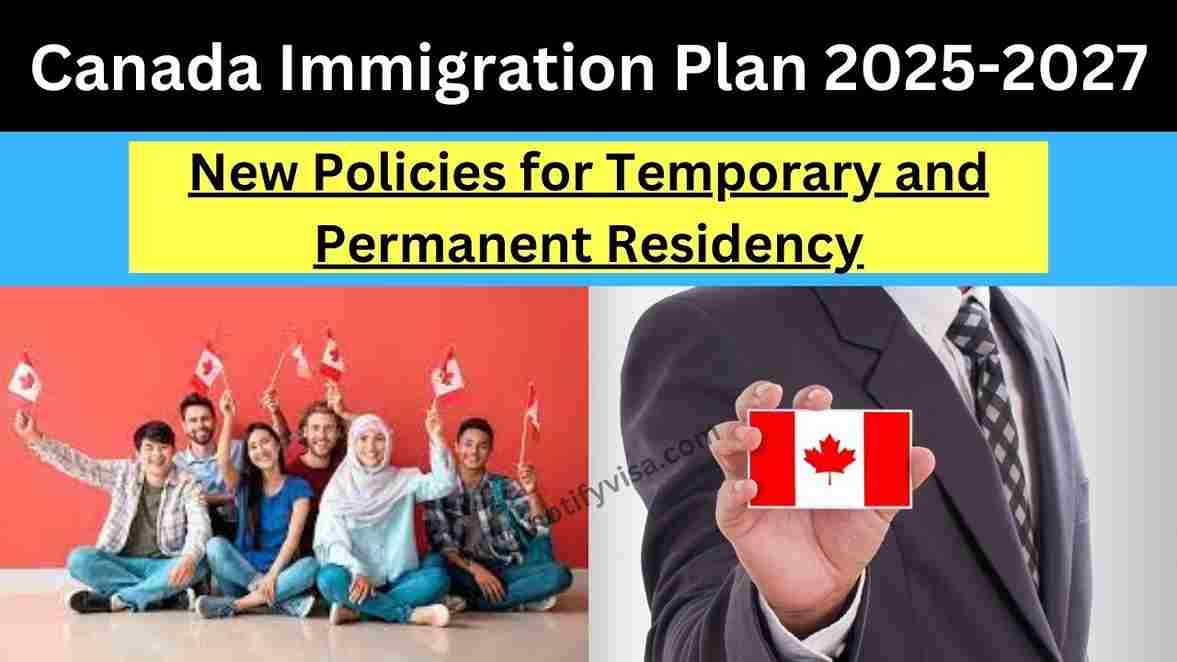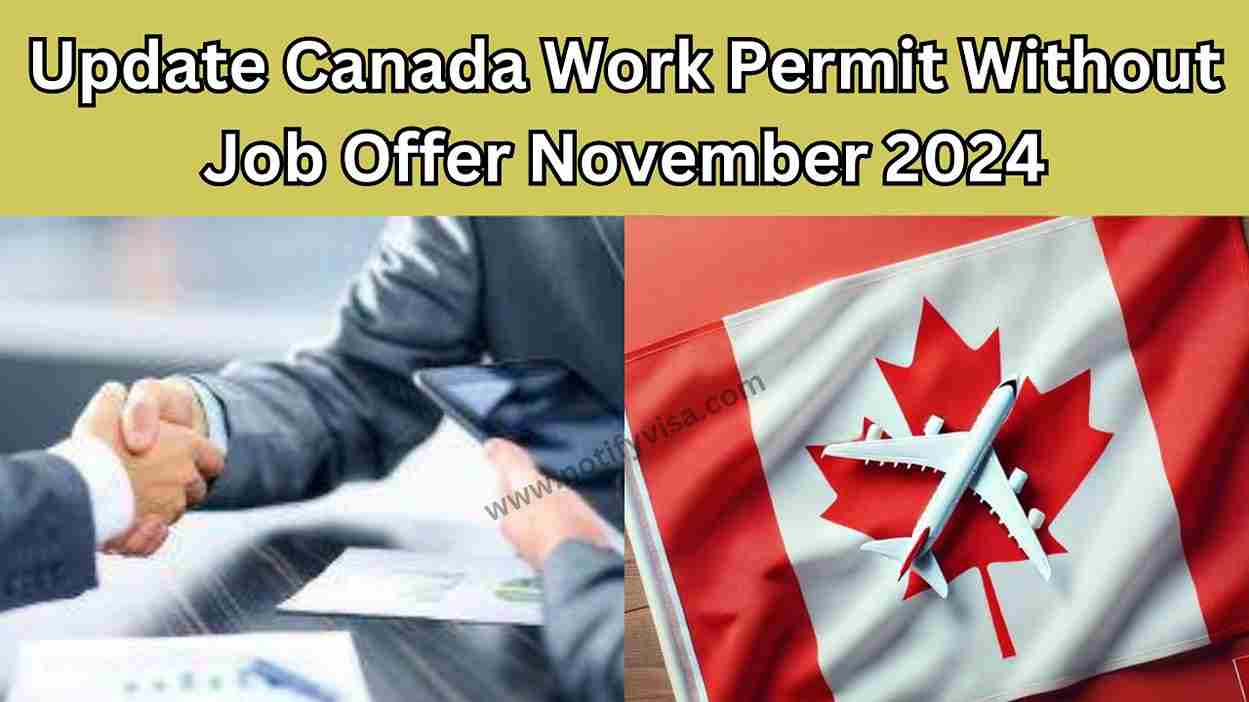As Canada focuses on addressing its labor shortages and financial development its movement strategy will undergo substantial changes between 2025 and 2027. These updates take into account contemporary regulations for both temporary and permanent residents underscoring Canada’s progressive stance on migration. These adjustments will impact a wide range of people from clever professionals to universal understudies as they are among the most appealing objectives for workers worldwide.
Traditionally, the Arrange establishes a goal for the number of undocumented residents who will be admitted to Canada in the upcoming year with apparent goals for the two years that follow spanning up to three years.
More than just Canada’s mobility destinations are impacted by the arrangement. It determines how the population of the nation will grow which in turn affects social structures, taxation, housing expenses, healthcare and employment growth.
Check Also: Latest Changes in Canadian Permanent Residency 2024
What is the Migration Plan for 2025–2027?
To monitor the number of newcomers entering the country, Immigration, Outcasts and Citizenship Canada (IRCC) will reveal its migration numbers planned for 2025–2027. This year’s plan introduces new limits on temporary residents, including those on study grants, employment grants and guest visas, whereas previous plans mostly focused on permanent residents. Everything from population growth to the extension of work-advertising, housing, healthcare and taxes will be impacted by the agreement.
To address concerns about the overcapacity of some labor markets and social services, Mark Mill, the operator of Canada’s Migration Service, has shown that the country will reduce the number of temporary residents. Let’s examine what the major changes in the upcoming movement arrangement mean for you.
Significant Modifications to Canada’s Movement Plan (2025–2027):
Temporary Residents: An Attention to Move-ins
The migration plan for Canada will have a big impact on temporary residents, including visitors, experts and understudies. In 2023, there were more than 2.5 million brief inhabitants or 6.2% of the total population. The IRCC intends to lower this to 5% of the population by 2027.
Given that Canada suggests balancing short-term migration with long-term economic and social demands, this might be a significant step. Over the next three years, the goal is to reduce the number of temporary residents, primarily by limiting open work permits and reducing grants.
Consider Grants More Carefully: Caps and Current Regulations:
Although study licenses have historically been a major source of temporary residents in Canada, the current system imposes greater restrictions. The IRCC said in January 2024 that it would prepare 35% fewer considered awards than in 2023, with a ceiling of 360,000 approvals.
Notable Changes:
- Limited Number of Considered Licenses: To mark a change from previous regulations, the IRCC will audit a specific number of aspects of granting applications annually.
- Effects on Advanced Degrees: Experts and PhD understudies will be subject to the cap for the first time and in 2025, there will be fewer approved grants totaling 437,000.
Why Are There Changes?
Concerns are raised that universal understudy is entering programs that need to adapt to Toada’s labor needs, but these adjustments also reflect Canada’s focus on reducing brie-short residents.
Open Work Grants More Stringent Requirements for SOWPs and PGWPs:
The Spousal OpenWork Allow (SOWP) and Post-Graduation Work Allow (PGWP) programs, which allow temporary workers to stay and work in Canada after being considered as specialists’ companions, are also facing revisions.
PGWP, or Post-Graduation Work Allowance:
- New Dialect Requirements: Starting in 2025, PGWP applicants will need to fulfill benchmarks for underused dialect proficiency. For college graduates a Canadian Dialect Benchmark (CLB) score of 7 is necessary while a CLB score of 5 is required.
- Reduction in PGWP Grants: The IRCC expects that over the next three years, 175,000 fewer PGWPs will be awarded as a result of the more stringent conditions.
Allowance for Spousal Open Work (SOWP):
Eligibility Restrictions: Only partners of experts in key industries such as healthcare and specialized firms will be eligible to participate in SOWP. This change will reduce open work funds by 50,000 over three years.
What This Signifies:
These modifications suggest that if you’re a buddy of a temporary specialist or a universal understudy you’ll need to make careful arrangements to match the current requirements or risk having problems getting a work visa.
Changes to the Brief Outside Specialist Program (TFWP) for Closed Work Licenses:
Change is also a key objective of the Transitory Remote Specialist Program (TFWP). Utilizing the TFWP requires businesses to adhere to specified limits on hiring temporary outside workers, particularly for low-paying positions.
Important Amendments:
Limit on Low-Wage Specialists: Managers are only permitted to hire temporary remote specialists for low-paying roles up to 10% of the workforce.
Shorter employment Licenses: Low-wage employment grants will now only last one year instead of two. This will encourage management to hire more Canadian employees or permanent residents.
Effect on Employers:
This trend suggests that hiring practices will need to adapt for companies that rely on temporary outside experts, particularly in industries like agriculture and food processing.
Changeless Home A: Centre on Economic Immigrants Proceeded
Canada’s immigration policy will continue to provide preference to permanent residents, particularly those arriving through financial migration channels. By 2025, the goal is to welcome 500,000 contemporary, changeless residents, with a focus on refugees, family sponsorships and financial workers.
Focus on Economic Migration:
Skilled Specialists: Talented workers who can boost the economy will be given priority in Canada. This includes employees with skills in fields like engineering, healthcare and innovation.
Why Is Financial Immigration the Focus?
- Economic workers are viewed as essential to addressing Canada’s labor shortage and contributing to the expansion and development of the financial sector. Canada’s economy depends on skilled workers to maintain its population as it ages and the birth rate declines.
- Addressing Issues Related to Accommodation and Medical Care in the Big Picture.
- Concerns about affordable housing and healthcare are growing along with Canada’s population.
- Many Canadians believe that to overcome these obstacles activity levels must be harmonized.
- According to the 2023 Amusing Found study, public support for high migration levels has decreased with many residents becoming anxious about the burden on housing and healthcare.
- The government acknowledges that the framework needs to be modified to account for overburdened social administrations, even as it continues to emphasize the advantages of migration.
- This is shown in the underutilized structure, which invites a high number of permanent immigrants while reducing the number of temporary residents.
Final Words:
Canada’s 2025–2027 Movement Arrange highlights a significant shift in the nation’s strategy for managing both temporary and permanent residents. Millions of people hoping to settle in Canada will be impacted by these reforms, which include tighter guidelines for work and study grants as well as an ongoing emphasis on financial mobility.
As the arrangement develops, it will be critical for international students, temporary professionals and companies that rely on remote capability to be informed about the latest developments. To ensure that the movement continues to benefit the country as a whole, Canada continues to focus on improving its financial development, labor shortages and social service capacity.
To ensure that you will successfully investigate these developments stay up to date on migration news. These modifications will have a long-term impact on Canada’s movement framework. If the 2025–2027 movements have an impact on you, make sure it’s proper to stay current and organize things appropriately.




I’m a staff nurse search a new job in Canada how I can apply for visa
Helper jobs contact me please
m9j2jj
5da8kk